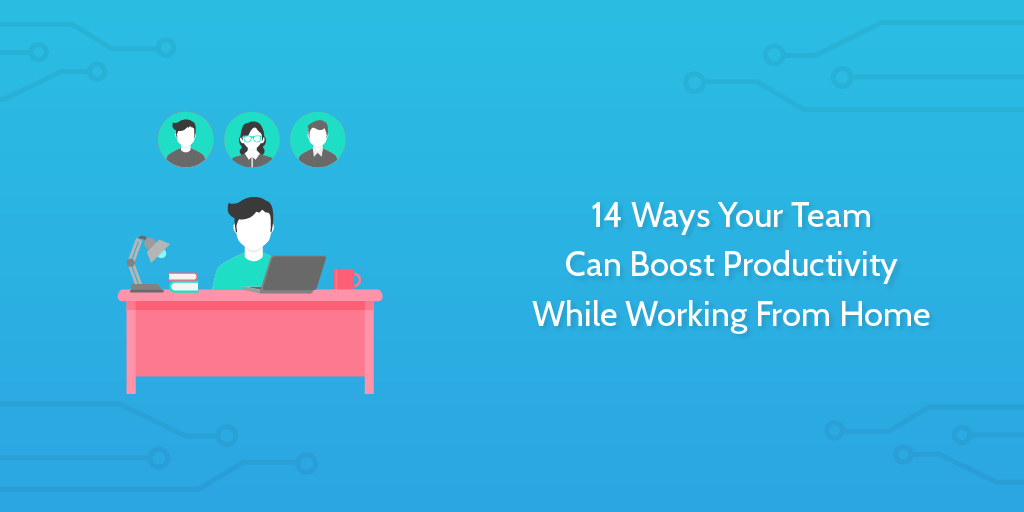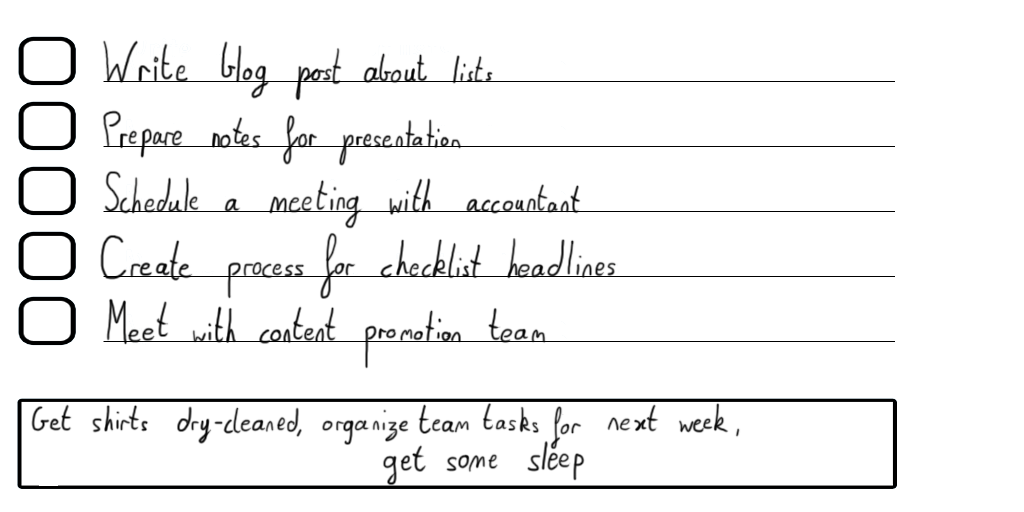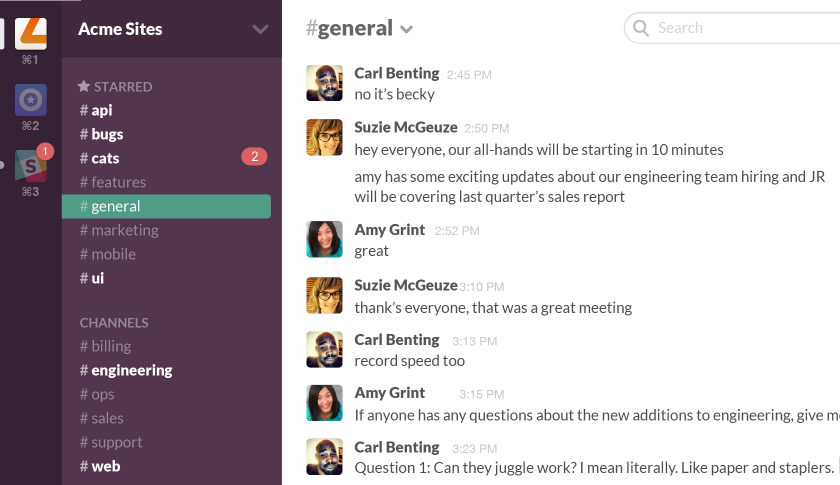This guide was written by Mauricio Prinzlau. Mauricio is the CEO of Cloudwards.net, a data and user feedback driven comparison engine for cloud apps and services. He enjoys writing and producing educational videos around the cloud to help people find the best cloud service for their needs.

So, you’ve given your employees the option of working from home. A win-win situation for the both of you!
And why shouldn’t you; considering that working from home has become a popular trend in the corporate world. While working from home is the norm for most freelancers, for full-time employees it can come with its own set of productivity and motivational challenges.
On the plus side, your employees won’t have to make the long commute to office and might get a head start on their work. However, home is also where the heart is, making employees lazy during work hours, and potentially disconnecting them from the serious work atmosphere.

So how do you balance the two – enabling your employees to be productive, while also motivating them to work hard, from the comfort of their own home? Experts believe that the answer lies in a combination of adopting flexible management practices, along with the latest in technology, to give employers control over their employees.
Let’s take a look at some of the most effective ways to keep work-from-home employees productive and motivated.
Compartmentalize the Office and Living Space
This is work-from-home 101; telling your employees to create a dedicated workspace in their homes. If you’ve given them the liberty to work remotely, it’s the least they can do. Make sure that your employees have created a designated work space in their homes, separate from their personal living space.

This is crucial as research has shown that combining workspace with personal space can cause employees to either feel that they don’t have to work or deprive them of sleep or relaxation as they get too immersed in their work.
Prioritize Tasks
Given that managing work-from-home employees is a purely human process, it’s always best to make your employees perform the most crucial tasks first. This is the best way to get them to complete complicated tasks on time. Because let’s face it, no work-from-home employee will work for a full 8 hours when they’re at home. So, it’s better if they perform priority tasks first so that they can complete the rest of their tasks comfortably, through the course of the day.
See this article on task management techniques to learn 7 different lists which help you prioritize your tasks and hit deadlines.
For example, there’s the 6-box method. This organizes the top 5 tasks for the day into their own boxes, and the 6th box is for everything else.

They’re Still Part of the Team
One of the important aspects of managing remote employees is to remember that they are still part of your workforce, and that they need to know it.
It becomes increasingly important to keep work-from-home employees updated on the latest progress of an assignment or a meeting. Even if it’s a random ad-hoc meeting, just let your remote employees know it, so that they don’t feel left out. Even when you’re delegating assignments & responsibilities, or brainstorming to resolve problems, always remember to include your remote employees, or you’ll end up making them feel isolated.
 Remotes.in is a way for remote workers to feel like they’re in an office together. If your remote workers could be feeling isolated, it’s worth checking out.
Remotes.in is a way for remote workers to feel like they’re in an office together. If your remote workers could be feeling isolated, it’s worth checking out.
Establish a Time-Tracking Technique
Independent work schedules can make it difficult to track every remote employee’s productive work hours, a problem that is amplified if they’re working in a different time-zone. The best way to overcome this is to establish a particular schedule for tracking productivity or to communicate with them. Apps you can use for time-tracking include:
Work with your remote employees to establish mutually agreed time-frames for completion of work or to engage in two-way communication. This will not only motivate them to work, but will also instill a sense of accountability. Weekly meetings are important, even more so when the employees are working from home.
Connect with Remote Employees
It is important to routinely connect with your remote employees, just as you would engage the employees who work in your office. Even if the remote worker is a freelancer, getting to know them better will help you assess them better, while also building a stronger work bond. This can be in the form of a casual email, phone call, or even text message; anything to show your employees you’re thinking about them.
Let Your Remote Employees Connect With Each Other
Being part of an organization goes beyond team meetings and working tight deadlines. And while most employees tend to bond over coffee breaks and water cooler gossip, work from home employees don’t spend their day in the company of their colleagues. And if your employees telecommute on a daily basis, they’re more than likely to be left out of ad-hoc meetings, or unplanned brainstorming sessions. This reduces their profile at work and disconnects them from each other.

As an employer, it is as important to keep lines of communication open between your subordinates, as between you and them. Today’s tech allows for conference calls, Slack, WhatsApp chat, and even video calls.
Schedule Regular Face-to-Face Meetings
No matter how far removed your remote employee might be, you’re going to have to schedule a face-to-face meeting with them at some point. Once every quarter is minimal, but doing it as often as possible will help build company culture.
Personal interactions with work-from-home employees not only builds up camaraderie, but reminds the employee that they still work for you even if they don’t see you all the time. Even if there’s no official purpose or need, invite your work-from-home employees to visit the office and participate in informal activities, such as coffee meet-ups, team lunches, and so on.
Appear.in lets you set a permanent URL for a video chatroom that stays open even when it’s empty.

That makes Appear.in a great home for meetings and hanging out because, unlike Skype, calls aren’t started and finished, they’re always ongoing which makes it more like a real office.
Don’t Micromanage
It’s obviously very important to stay connected with a work-from home employee in order to keep track of their productivity and schedule activities, there’s just no point in bugging them every 30-40 minutes asking for an update. This sort of micro-management is a thorough waste of time and productivity for the both of you.

Mandate a Dress Code
This might seem unnecessary and annoying to your employees, but dressing for work during the productive hours of the day will allow them to focus on the tasks at hand. It also instils the sense of responsibility and accountability that would occur at the work place. They don’t have to wear a suit, but getting them out of their pyjamas should work.
A study from professors at the Kellogg School of Management at Northwestern University in 2012 showed that employees who wore clothes suited to their job performed better than those who didn’t.
“The influence of clothes depends on wearing them and their symbolic meaning.” – Adam & Galinsky
Request Family Members to Let Your Employee Work
Sometimes, family can be the biggest distraction when working from home. It’s important to remember that most people’s families wouldn’t disturb them at work, and would typically wait till they got home, but a work from home employee might not be met with the same level of restraint.
Employees aren’t available just because they’re working from home, and should lay out some ground rules about work time engagements. Any kind of interruption should be kept for later, unless it’s very urgent.
Restrict Social Media Use
Now this is a tough one because we all know how some people love interacting on social networks, all the time. But remove social network platforms or blocking such sites (if it’s an office provided computer) means that not only will your employees waste their time of social media, but will also reduce and urges to do so.
It’s very easy to get caught in the social media time trap, so eliminating the point of entry will ensure greater productivity.
For further reading, see this article on why it’s so easy to ignore your responsibilities and get distracted by Twitter.
Ask Them to Find a Distraction
Work from home employees can find a million things to distract them, it’s how they use the distraction to increase productivity that matter.

Although it might seem counterintuitive, but having a distraction, baby/grandparent to take care of, adds some pressure on employees to be focused on work, while taking care of any issues at home. This concept works along the same lines as how some people simply work better under pressure as it teaches them how to manage their time more efficiently and effectively.
Plan out Daily Work Schedules
If your employees are planning to work from home on a certain day or for a specific period of time, it would be a good idea if they planned out their work schedule for that particular period. That also means planning your day with them, especially if they work with you on a constant basis.
There are some tasks that cannot be done at home, for example printing a 3D model from the office printer or making a client call from the company landline. Make sure your employees plan out their work days so they can optimize their productivity.
Don’t Stay at Home
This won’t apply to a lot of WFH employees as they’re probably doing it because they need to be at home. But working from home doesn’t mean that you literally have to be at home, especially for those who just find it inconvenient to travel to work every day.

You can ask your employees to work out of coffee shops, restaurants, or even their grandparents’ place, as long as the establishment is Wi-Fi enabled, and allows you to work in a professional manner.
For some, the noise and bustle of a public place simulates the work environment, making them more productive. A big plus of working from home but, from outside the house, is that it removes daily distractions such as laundry, or even the TV.
It is estimated that more than 10 percent of employees in the United States alone work from home on a regular basis. And if used properly, a work from home option can result in enormous time and money savings for both you and your employees- not to mention the convenience of working from you own home. So, whether you’re employees are out on leave, find traveling inconvenient or just working remotely, following the above mentioned tips will allow them to be just as productive at home as they would be in the office.
Use Cloud
Stop using those traditional methods of data transmitting. Using Cloud will give you flexibility and efficiency. More than 35% of businesses use Cloud or planning to use it soon. It’s safe and secure to use to it saves time. Everyone one will feel more connected workplace as it allows easy collaboration between team members. Anyone can access relevant files and documents from wherever they are: a prospect’s headquarters, on a plane, or at home.
It is estimated that more than 10 percent of employees in the United States alone work from home on a regular basis. And if used properly, a work from home option can result in enormous time and money savings for both you and your employees- not to mention the convenience of working from your own home.
So, whether you’re employees are out on leave, find traveling inconvenient or just working remotely, following the above mentioned tips will allow them to be just as productive at home as they would be in the office.







 Workflows
Workflows Projects
Projects Data Sets
Data Sets Forms
Forms Pages
Pages Automations
Automations Analytics
Analytics Apps
Apps Integrations
Integrations
 Property management
Property management
 Human resources
Human resources
 Customer management
Customer management
 Information technology
Information technology



Benjamin Brandall
Benjamin Brandall is a content marketer at Process Street.